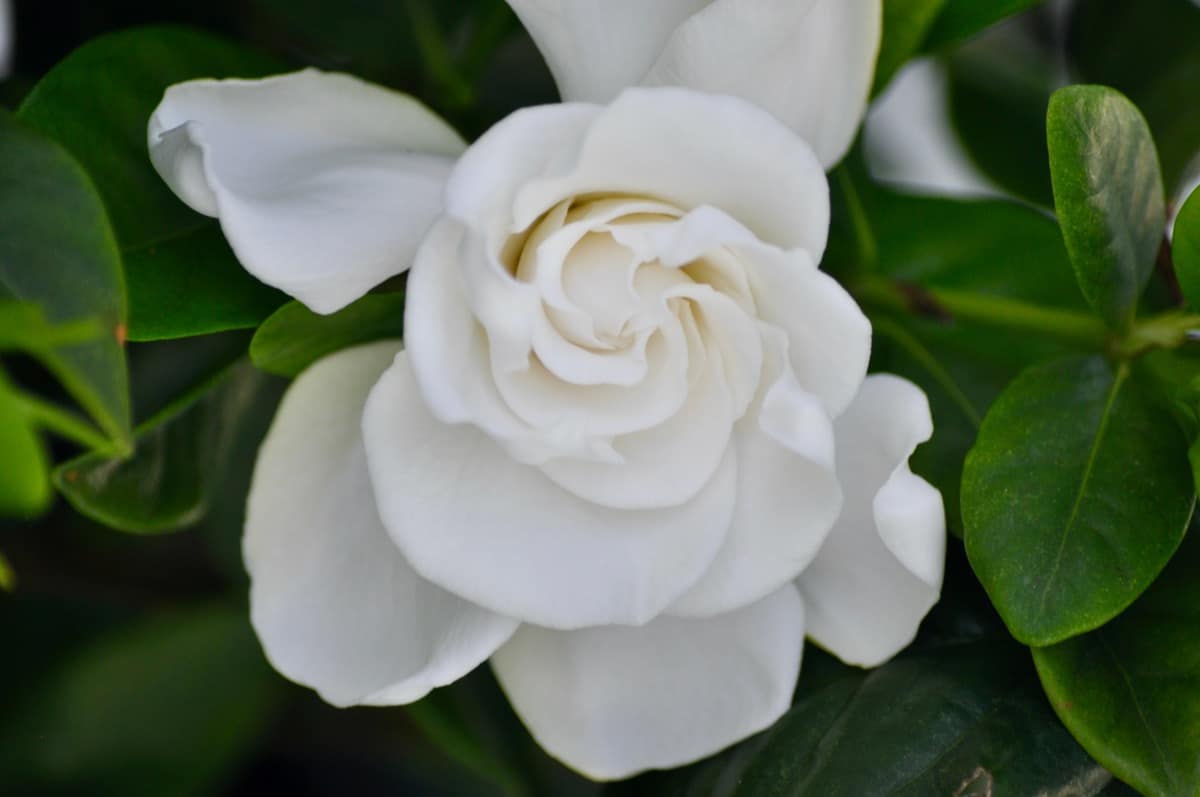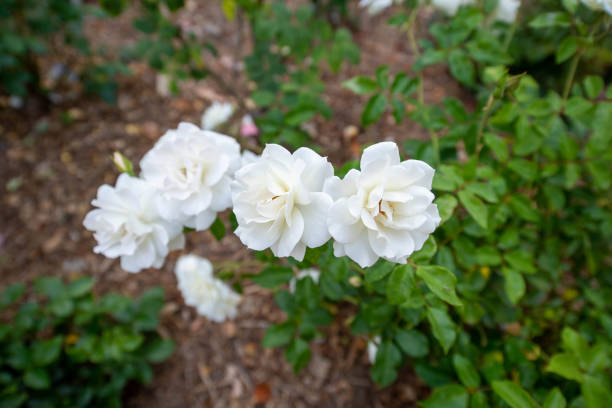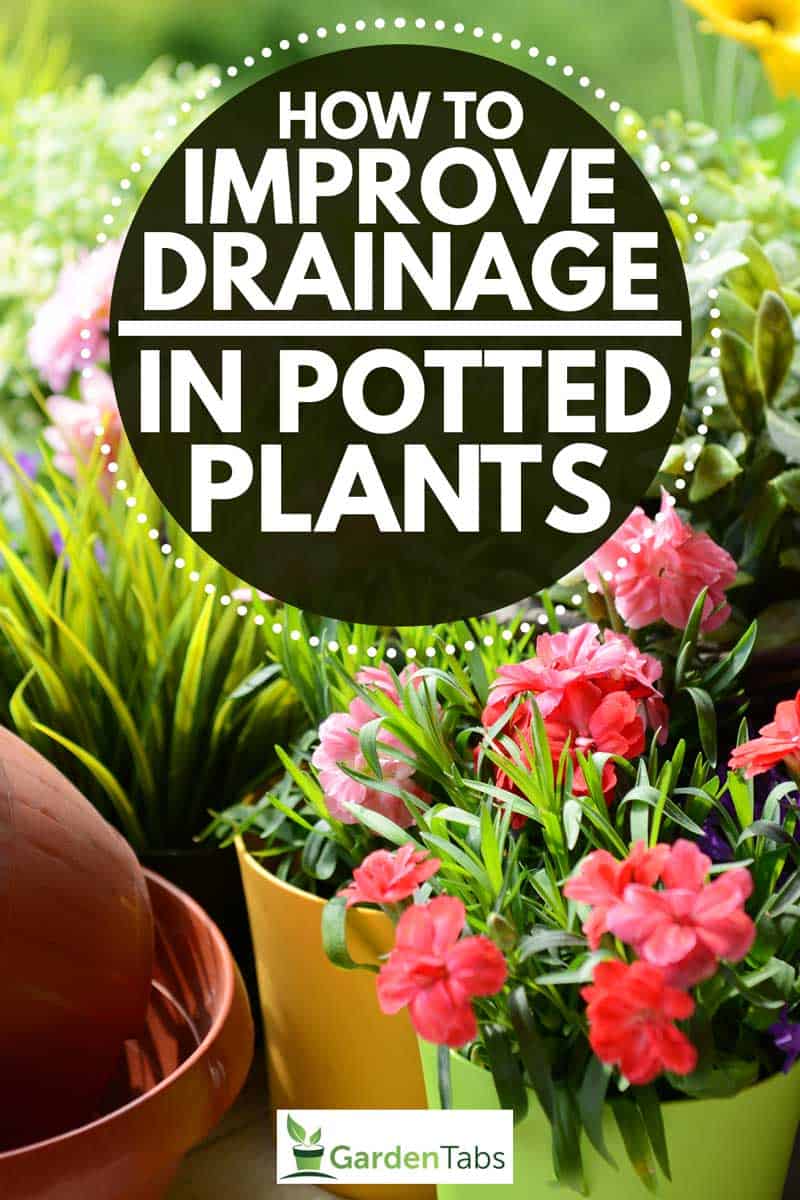Unlocking the Secrets to Thriving Gardenias in Containers
Gardenias are one of the most popular and fragrant flowering plants, but they can be finicky when it comes to their growing conditions. One of the most critical factors in growing healthy gardenias in pots is using the right soil. The right potting soil can make all the difference in promoting healthy growth, preventing disease, and encouraging blooming. In this article, we will explore the importance of using the right soil for gardenias in pots and provide tips on how to choose the best potting mix for these beautiful plants.
Gardenias have specific soil requirements that are different from other plants. They prefer well-draining, acidic soil that is rich in organic matter. Using regular garden soil in pots can lead to waterlogging, root rot, and other problems that can be detrimental to the health of the plant. On the other hand, a well-crafted potting mix can provide the right balance of nutrients, pH, and drainage that gardenias need to thrive.
So, what makes a good potting soil for gardenias in pots? Look for a mix that is specifically designed for acid-loving plants like gardenias. These mixes usually have a lower pH level and are formulated to provide the right balance of nutrients. Avoid using potting soils that are high in fertilizers, as these can burn the roots of the plant. Instead, opt for a mix that is rich in organic matter like peat moss or coconut coir. These ingredients help to retain moisture, suppress diseases, and promote healthy root growth.
By using the right soil for gardenias in pots, you can enjoy the beauty and fragrance of these plants all year round. Whether you’re a seasoned gardener or a beginner, choosing the right potting mix is an essential step in growing healthy and thriving gardenias. In the next section, we will delve deeper into the specific soil requirements for gardenias and explore how to create a custom potting mix that meets their unique needs.
Understanding Gardenia Soil Requirements: pH, Nutrients, and More
Gardenias are acid-loving plants that require a specific set of soil conditions to thrive. When it comes to choosing the right soil for gardenias in pots, it’s essential to understand their unique needs. In this section, we’ll delve into the ideal pH range, essential nutrients, and other factors that impact the growth and health of gardenias.
The ideal pH range for gardenias is between 5.0 and 6.0, which is slightly acidic to acidic. This pH range allows for optimal nutrient uptake and helps to prevent nutrient deficiencies. If the pH level is too high or too low, it can lead to nutrient imbalances and negatively impact the plant’s growth.
In addition to pH, gardenias require a range of essential nutrients to thrive. These include nitrogen, phosphorus, potassium, and micronutrients like iron and magnesium. A well-balanced fertilizer that is specifically formulated for acid-loving plants like gardenias can help to provide these essential nutrients.
Other factors that impact the growth and health of gardenias include soil texture, structure, and organic matter content. Gardenias prefer well-draining soil that is rich in organic matter like peat moss or coconut coir. These ingredients help to retain moisture, suppress diseases, and promote healthy root growth.
When choosing a potting soil for gardenias, it’s essential to look for a mix that is specifically designed for acid-loving plants. These mixes usually have a lower pH level and are formulated to provide the right balance of nutrients. Avoid using potting soils that are high in fertilizers, as these can burn the roots of the plant.
By understanding the specific soil requirements for gardenias, you can choose the right potting mix and provide your plants with the best possible start. In the next section, we’ll explore how to create a custom gardenia potting mix that meets their unique needs.
How to Create a Custom Gardenia Potting Mix: A Step-by-Step Guide
Creating a custom potting mix for gardenias in pots can be a rewarding experience, allowing gardeners to tailor the soil to their specific needs. By following a simple step-by-step guide, gardeners can craft a well-balanced mix that promotes healthy growth, flowering, and root development.
To start, gather the necessary ingredients, including:
- Peat moss or coconut coir (30-40% of the mix)
- Composted bark or pine bark (20-30% of the mix)
- Perlite or vermiculite (10-20% of the mix)
- Worm castings or compost (5-10% of the mix)
- Dolomitic limestone or crushed eggshells (1-2% of the mix)
- Slow-release fertilizer (optional)
Next, combine the ingredients in a large bucket or container, following the recommended proportions. Start by adding the peat moss or coconut coir, followed by the composted bark or pine bark, perlite or vermiculite, worm castings or compost, and dolomitic limestone or crushed eggshells.
Thoroughly mix the ingredients together, taking care to break up any clumps or lumps. If using slow-release fertilizer, sprinkle it evenly throughout the mix.
Once the mix is well combined, it’s essential to test the pH level. Gardenias prefer a slightly acidic to neutral soil pH, ranging from 5.5 to 6.5. If necessary, adjust the pH by adding more dolomitic limestone or peat moss.
Finally, transfer the custom potting mix to a clean, sterilized container or pot, and plant the gardenia. Water thoroughly, and provide adequate drainage to prevent waterlogged soil.
By following this step-by-step guide, gardeners can create a custom potting mix that meets the unique needs of their gardenias in pots. This tailored approach will help promote healthy growth, flowering, and root development, ensuring thriving gardenias that bring joy and beauty to any space.
Top Potting Soil Products for Gardenias: A Review of Popular Options
When it comes to selecting a potting soil for gardenias in pots, there are numerous options available on the market. To help gardeners make an informed decision, this review will compare and contrast some of the most popular potting soil products suitable for gardenias.
Miracle-Gro Potting Mix is a well-known and widely used potting soil that is suitable for gardenias. This mix is formulated with a blend of peat moss, vermiculite, and perlite, providing good drainage and aeration. However, some gardeners may find it too dense and prone to waterlogging.
Black Kow All Purpose Potting Mix is another popular option that is rich in organic matter and has a slightly acidic pH, making it suitable for gardenias. This mix is also formulated with a blend of peat moss, vermiculite, and perlite, providing good drainage and aeration.
E.B. Stone Organics Gardenia, Azalea & Camellia Planting Mix is a specialized potting soil that is specifically designed for acid-loving plants like gardenias. This mix is formulated with a blend of peat moss, perlite, and vermiculite, and has a slightly acidic pH. It also contains added nutrients and micronutrients that promote healthy growth and flowering.
Pro-Mix All Purpose Potting Mix is a high-quality potting soil that is suitable for gardenias. This mix is formulated with a blend of peat moss, vermiculite, and perlite, providing good drainage and aeration. It also contains added nutrients and micronutrients that promote healthy growth and flowering.
When selecting a potting soil for gardenias in pots, it’s essential to consider the specific needs of these plants. Look for a mix that is specifically designed for acid-loving plants, has a slightly acidic pH, and contains added nutrients and micronutrients. Avoid using regular garden soil, as it can be too dense and prone to waterlogging.
In addition to the products mentioned above, there are many other potting soil options available on the market. When making a decision, consider the specific needs of your gardenias, and read reviews and product labels carefully to ensure that you’re getting a high-quality mix that meets their needs.
By choosing the right potting soil for gardenias in pots, gardeners can promote healthy growth, flowering, and root development, and enjoy thriving plants that bring joy and beauty to any space.
The Importance of Good Drainage and Aeration in Gardenia Potting Soil
Good drainage and aeration are crucial components of a well-crafted potting soil for gardenias in pots. Without proper drainage, the soil can become waterlogged, leading to root rot and other problems that can be detrimental to the health of the plant.
Gardenias prefer a potting soil that drains excess water quickly, yet retains enough moisture to support healthy growth. To achieve this, it’s essential to include ingredients that improve drainage and aeration, such as perlite, vermiculite, or sand.
Perlite is a popular choice for improving drainage in potting soils. This lightweight, porous material helps to break up compacted soil and allows excess water to drain quickly. Vermiculite is another option that not only improves drainage but also retains moisture and nutrients, making it an excellent choice for gardenias.
Sand is also a good option for improving drainage, but it can be too dense if used alone. Mixing sand with other ingredients, such as peat moss or coconut coir, can help to create a well-balanced potting soil that drains excess water quickly.
In addition to including ingredients that improve drainage, it’s also essential to ensure that the potting soil has good aeration. This can be achieved by adding ingredients that help to break up compacted soil, such as compost or worm castings.
Good aeration is critical for healthy root growth, as it allows oxygen to reach the roots and promotes healthy microbial activity. Without good aeration, the roots can become waterlogged, leading to root rot and other problems.
To ensure good drainage and aeration in your potting soil, follow these tips:
- Use a potting soil that contains ingredients that improve drainage, such as perlite, vermiculite, or sand.
- Avoid using regular garden soil, as it can be too dense and prone to waterlogging.
- Add ingredients that help to break up compacted soil, such as compost or worm castings.
- Use a pot that has good drainage holes to prevent water from accumulating in the soil.
- Water your gardenias carefully, avoiding overwatering, which can lead to waterlogged soil.
By following these tips and creating a potting soil that has good drainage and aeration, you can help to promote healthy growth and prevent problems that can be detrimental to the health of your gardenias.
Common Mistakes to Avoid When Choosing a Potting Soil for Gardenias
When it comes to selecting a potting soil for gardenias in pots, there are several common mistakes to avoid. By being aware of these mistakes, gardeners can ensure that they choose a high-quality potting soil that meets the unique needs of their gardenias.
One of the most common mistakes is using regular garden soil in pots. Garden soil is often too dense and can compact easily, leading to poor drainage and aeration. This can cause root rot and other problems that can be detrimental to the health of the plant.
Another mistake is neglecting pH levels. Gardenias prefer a slightly acidic to neutral soil pH, ranging from 5.5 to 6.5. If the potting soil is too alkaline or too acidic, it can cause nutrient deficiencies and other problems.
Ignoring nutrient deficiencies is also a common mistake. Gardenias require a balanced diet of nutrients to thrive, including nitrogen, phosphorus, and potassium. A potting soil that is deficient in these nutrients can cause stunted growth, yellowing leaves, and other problems.
Not considering the specific needs of gardenias is another mistake. Gardenias have unique requirements, such as high humidity and good air circulation, that must be taken into account when selecting a potting soil.
Using a potting soil that is too old or has been contaminated with pests or diseases is also a mistake. Old potting soil can break down over time, losing its structure and fertility. Contaminated potting soil can spread pests and diseases to the plant, causing serious problems.
To avoid these mistakes, it’s essential to choose a high-quality potting soil that is specifically designed for gardenias in pots. Look for a potting soil that is well-balanced, has good drainage and aeration, and is formulated to meet the unique needs of gardenias.
Some other tips to keep in mind when selecting a potting soil for gardenias include:
- Read the label carefully to ensure that the potting soil meets the specific needs of gardenias.
- Choose a potting soil that is fresh and has not been contaminated with pests or diseases.
- Avoid using potting soils that contain fillers or by-products, which can reduce the quality of the soil.
- Consider making your own potting soil using a combination of ingredients that meet the specific needs of gardenias.
By avoiding these common mistakes and choosing a high-quality potting soil, gardeners can help to ensure that their gardenias thrive in pots.
Tips for Maintaining Healthy Gardenias in Pots: Soil Care and Beyond
Maintaining healthy gardenias in pots requires more than just choosing the right potting soil. It also involves providing the right care and attention to the plant’s soil, fertilization, pruning, and pest management needs.
Soil Care:
One of the most important aspects of maintaining healthy gardenias in pots is soil care. This includes ensuring that the potting soil is well-draining and has the right pH level. It’s also essential to fertilize the soil regularly, using a balanced fertilizer that is specifically designed for gardenias.
Fertilization:
Fertilizing gardenias in pots is crucial for promoting healthy growth and flowering. Use a balanced fertilizer that contains equal amounts of nitrogen, phosphorus, and potassium. Apply the fertilizer according to the manufacturer’s instructions, and avoid over-fertilizing, which can cause more harm than good.
Pruning:
Pruning is an essential part of maintaining healthy gardenias in pots. Prune the plant regularly to maintain its shape and promote new growth. Remove any dead or damaged leaves or stems, and cut back the plant to encourage bushy growth.
Pest Management:
Pests can be a significant problem for gardenias in pots, particularly mealybugs, spider mites, and scale. Inspect the plant regularly for signs of pests, and treat any infestations promptly. Use organic pest control methods whenever possible, and avoid using chemical pesticides, which can harm the plant and the environment.
Other Tips:
In addition to soil care, fertilization, pruning, and pest management, there are several other tips to keep in mind when maintaining healthy gardenias in pots. These include:
- Providing the right amount of water: Gardenias in pots need consistent moisture, but make sure not to overwater, which can cause root rot.
- Providing the right amount of light: Gardenias prefer bright, indirect light, but make sure not to expose them to direct sunlight, which can cause leaf scorch.
- Providing the right temperature: Gardenias prefer temperatures between 65-75°F (18-24°C), but make sure not to expose them to extreme temperatures, which can cause damage.
- Repotting: Gardenias in pots need to be repotted every 2-3 years, as the potting soil breaks down over time. Choose a pot that is slightly larger than the previous one, and use fresh potting soil.
By following these tips, you can help to maintain healthy gardenias in pots and enjoy their beautiful flowers and fragrance for years to come.
Conclusion: Finding the Perfect Soil for Your Potted Gardenias
Choosing the right potting soil for gardenias in pots is crucial for their growth and health. By understanding the unique needs of these plants and selecting a well-crafted soil mix, gardeners can help to promote healthy growth, flowering, and root development.
In this article, we have discussed the importance of using the right potting soil for gardenias in pots, including the benefits of a well-crafted soil mix and the unique needs of these plants. We have also delved into the specific soil requirements for gardenias, including the ideal pH range, essential nutrients, and other factors that impact their growth and health.
Additionally, we have provided a step-by-step guide on how to create a custom potting mix for gardenias, including the necessary ingredients, proportions, and mixing instructions. We have also reviewed and compared popular potting soil products suitable for gardenias, including products like Miracle-Gro, Black Kow, and E.B. Stone Organics.
Furthermore, we have discussed the critical role of good drainage and aeration in gardenia potting soil, including tips on how to achieve optimal drainage and prevent waterlogged soil. We have also identified common mistakes to avoid when selecting a potting soil for gardenias, including using regular garden soil, neglecting pH levels, and ignoring nutrient deficiencies.
Finally, we have offered expert tips on maintaining healthy gardenias in pots, including soil care, fertilization, pruning, and pest management.
In conclusion, choosing the right potting soil for gardenias in pots is essential for their growth and health. By following the tips and guidelines outlined in this article, gardeners can help to promote healthy growth, flowering, and root development, and enjoy the beauty and fragrance of these stunning plants.
Final Checklist for Success:
- Choose a potting soil that is specifically designed for gardenias in pots.
- Ensure the potting soil has good drainage and aeration.
- Check the pH level of the potting soil and adjust as necessary.
- Provide the right amount of water and fertilization.
- Prune the plant regularly to maintain its shape and promote new growth.
- Monitor for pests and diseases and take action promptly if necessary.
By following these tips and guidelines, gardeners can help to ensure the success of their potted gardenias and enjoy their beauty and fragrance for years to come.






